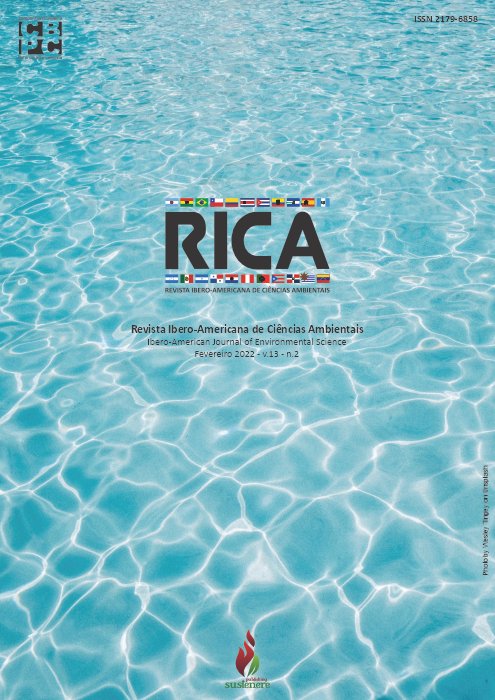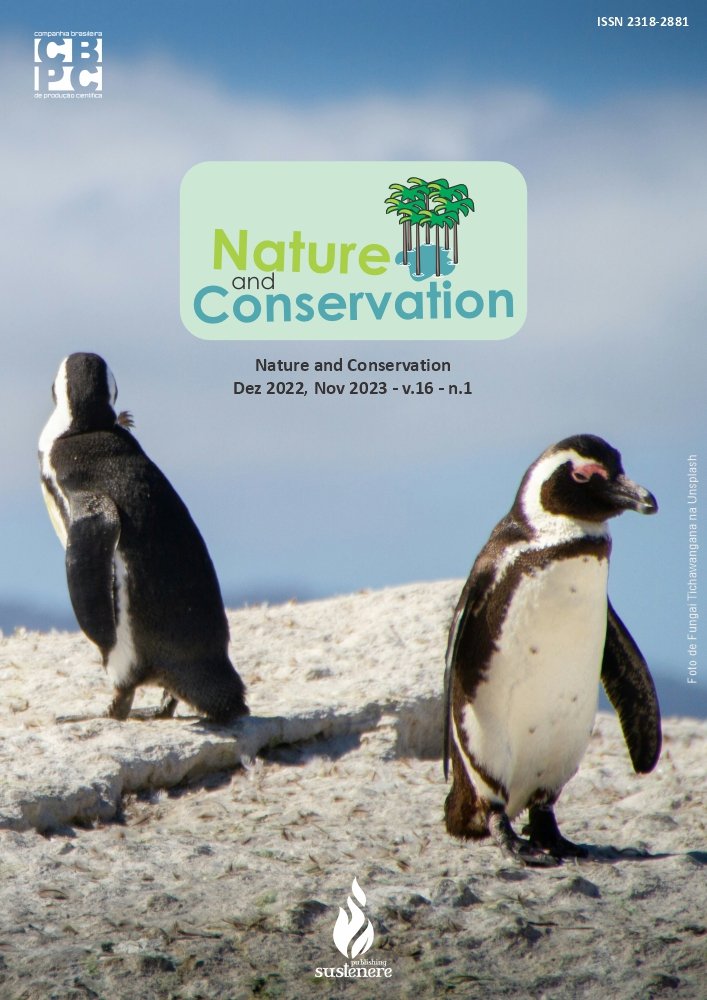Evaluation of surface water quality in a periurban watershed in the municipality of Santarém, PA
DOI:
https://doi.org/10.6008/CBPC2179-6858.2022.002.0011Keywords:
Seasonality, Monitoring, CONAMA 357/05, IQAAbstract
Surface waters are almost rarely free from pollution and contamination, even with little human interaction. They are more susceptible environments, due to their own condition. The disorderly occupation around water courses generates significant negative impacts on aquatic ecosystems. In this assumption, the present study aims to evaluate the water quality of the Juá watershed, located in peri-urban areas of the municipality of Santarém in western Pará. Six sampling points divided along the watershed were selected, considering the main course and its tributaries. The campaigns were carried out in different periods of the year, in the rainy regime (February/2020 and January/2021) and less rainy regime (November/2020 and September/2021), making it possible to visualize the influence of seasonal variations on the quality of the water body. The Water Quality Index - IQA developed by CETESB was calculated, and confronted with the standards established by CONAMA Resolution 357/2005 for class II waters. The application of the WQI showed that most of the monitored points are classified as REGULAR, however, it is worth noting that points P4 and P5 behaved as BAD. When comparing the seasonality of the seasons, it is observed that the driest period presented better rates, this is explained by the fact that there is greater transport of pollutants into water bodies in the wettest period. Comparing with CONAMA 357/2005, some values of dissolved oxygen (OD), pH, phosphorus (P), turbidity and thermotolerant coliforms are in disagreement with the legislation with concentrations 60 times above the allowed, in the case of coliforms. Acidic pH concentrations are considered natural in the region, due to the aquatic-forest interaction that results from the presence of humic and fulvic substances arising from the decomposition of organic matter in the riparian forest. In addition, CONAMA 357/2005, as well as the IQA, does not consider the natural differences in the ecological processes of the Amazon aquatic ecosystem, which is different from other regions of the country. Thus, it is evident the need to monitor the Amazonian urban watersheds, which suffer from a rapid decline in water quality, and to adapt quality standards that take into account the ecoregional characteristics of surface waters in the region.
Downloads
Downloads
Published
Issue
Section
License
Copyright (c) 2022 Ibero-American Journal of Environmental Sciences

This work is licensed under a Creative Commons Attribution-NonCommercial-NoDerivatives 4.0 International License.
The CBPC - Companhia Brasileira de Produção Científica (Brazil CNPJ: 11.221.422/0001-03) the material rights of the published works. The rights relate to the publication of the work anywhere in the world, including rights to renewals, expansions and dissemination of the contribution, as well as other subsidiary rights. All electronically published works may subsequently be published in printed collections under the coordination of this company and / or its partners. The authors preserve the copyright, but are not allowed to publish the contribution in another medium, printed or digital, in Portuguese or in translation.









